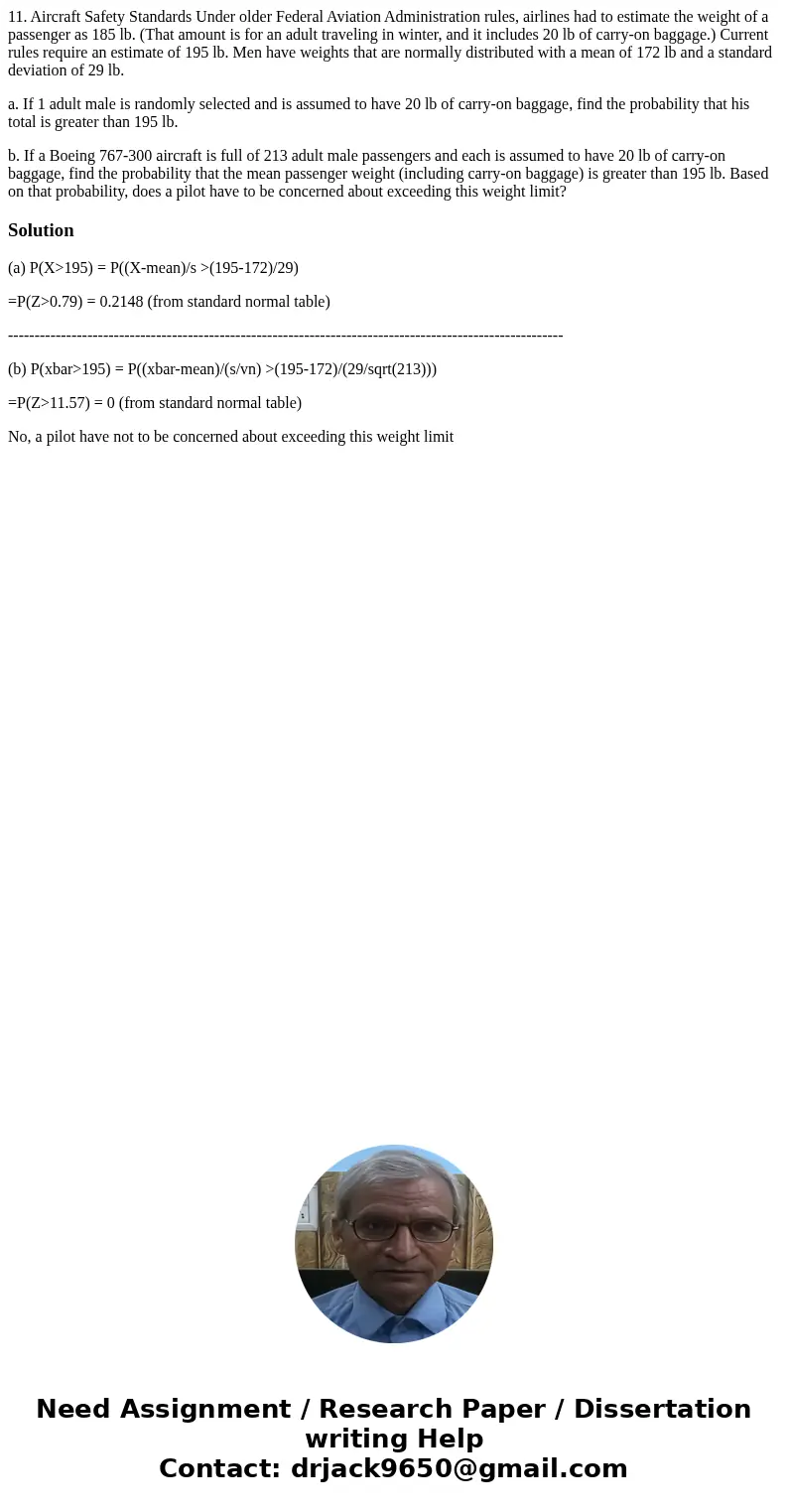11 Aircraft Safety Standards Under older Federal Aviation Ad
11. Aircraft Safety Standards Under older Federal Aviation Administration rules, airlines had to estimate the weight of a passenger as 185 lb. (That amount is for an adult traveling in winter, and it includes 20 lb of carry-on baggage.) Current rules require an estimate of 195 lb. Men have weights that are normally distributed with a mean of 172 lb and a standard deviation of 29 lb.
a. If 1 adult male is randomly selected and is assumed to have 20 lb of carry-on baggage, find the probability that his total is greater than 195 lb.
b. If a Boeing 767-300 aircraft is full of 213 adult male passengers and each is assumed to have 20 lb of carry-on baggage, find the probability that the mean passenger weight (including carry-on baggage) is greater than 195 lb. Based on that probability, does a pilot have to be concerned about exceeding this weight limit?
Solution
(a) P(X>195) = P((X-mean)/s >(195-172)/29)
=P(Z>0.79) = 0.2148 (from standard normal table)
---------------------------------------------------------------------------------------------------------
(b) P(xbar>195) = P((xbar-mean)/(s/vn) >(195-172)/(29/sqrt(213)))
=P(Z>11.57) = 0 (from standard normal table)
No, a pilot have not to be concerned about exceeding this weight limit

 Homework Sourse
Homework Sourse